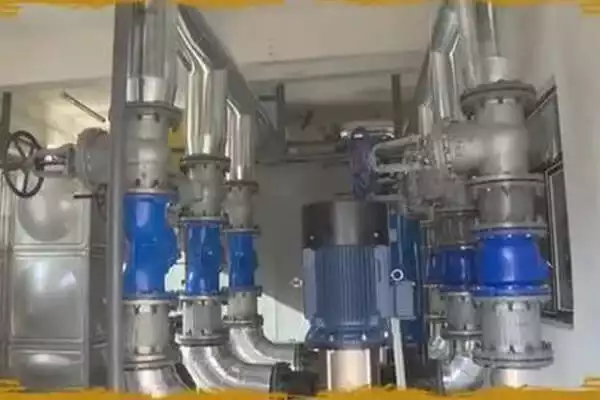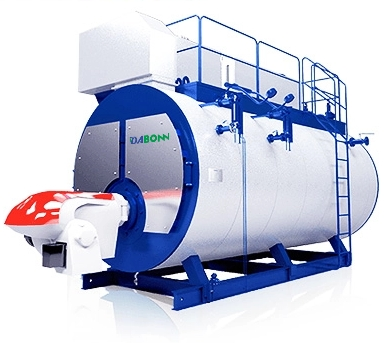
Introducción
Draining a boiler is an essential chore that should only be done by experienced boiler technicians. If you don’t know, you could damage your equipment and end up with expensive repairs. Sin embargo, if you have been trained as a certified technician or have experience replacing or repairing boilers. Then this guide, I will show you how to drain a boiler safely.
Paso 1: Quick Rinse
En primer lugar. Before starting the draining process, make sure to turn off the boiler y dale un enjuague rápido. Esto significa correr un poco de agua fría a través del sistema para eliminar los restos o sedimentos sueltos que puedan haber acumulado por dentro.
Paso 2: Turn Off the Water Supply and Boiler
Localice la válvula de suministro de agua principal y apáguela para detener el flujo de agua en la caldera. próximo, Apague la fuente de alimentación a la caldera para garantizar su seguridad durante el proceso de drenaje. Esto generalmente se hace apagando una válvula o cambia en la parte delantera de su caldera., Pero algunos modelos pueden requerir acceder a él desde atrás.
Apague el suministro de gas de su sistema de calefacción si hay uno conectado a su caldera (Esto se indicará mediante un dial adicional en la parte superior o al lado del panel de control principal).
Paso 3: Drain the Residual Water in the Pipe
El siguiente paso es drenar el agua residual en la tubería. Para deshacerse de cualquier agua restante en las tuberías, open a faucet near the boiler. You should be able to do this by turning off your water supply, or by using a wet/dry vacuum to remove it. If you have access to a plumber’s snake, that will also work well for removing residual water from the inside of pipes.
Paso 4: Connect the Hose to the Boiler Drain Valve
You’ll need to attach a hose to your boiler drain valve. So that you can direct water from inside your home into an outdoor drain or bucket, where it can be disposed of safely. Open up this valve and let gravity do its job as you begin draining out all of that dirty water! You should also make sure that when connecting hoses, they are long enough so as not to get caught on anything during use or storage.
Paso 5: Open the Drain Valve and Flush the Tank with Water
Once you have drained the tank, it’s time to flush it out. Using a wrench to open your boiler’s drain valve. And let the water run through until it comes out clear. This will get rid of any sediment that has built up in your system and ensure that no debris remains inside when you’re done with this process.
If you have done this step correctly when you turn off the drain valve, there will be no more water coming out of it and it will. Que no, repeat this step until it does!
Paso 6: Draining the Boiler Tank
The next step is to drain the boiler tank. You will need to open your boiler’s drain valve and allow water to flow freely into a bucket or other container until it stops draining. Then close that valve, and fill up another bucket with clean water from your sink faucet. And repeat this process until there is no more sediment left in your tank (you may need to repeat this process several times).
Paso 7: Tighten the Valve
Once you’ve drained all of the water from your boiler, you can begin to tighten the valve. Turn the valve clockwise to tighten it and prevent any leaks from occurring. If you need to remove it for any reason, turn the valve counterclockwise until it comes off easily (but not so loose that water will spill out).
Paso 8: Fill the Water Heater
Now your boiler is drained, you can begin refilling it. Turn on the main water supply valve and allow the tank to fill up. Keep a close eye on the pressure gauge to ensure it doesn’t exceed the recommended level.
Be sure to turn off any valves before doing this. Wait for your calentador de agua to heat up and then check its temperature using a thermometer. If it’s above 120 grados Fahrenheit, turn off your boiler and wait until it cools down before draining again.
Paso 9: Reignite the Boiler and Check the Drain Valve
Finalmente. After you’ve drained the boiler, it’s time to reignite it. Once the boiler has been re-fired, check for leaks around any joints where pipes meet or connect together. If there are any signs of leakage in these areas, contact a qualified plumber immediately to fix them before they cause further damage to your home or property.
If all went according to plan, you should now be able to turn on your faucet and watch as hot water rushes out of it. Congratulations! You’ve successfully drained and drained a boiler!
Conclusión
En conclusión, draining the boiler is a simple procedure that can be accomplished in 9 pasos. By following these steps, you’ll be able to drain your boiler safely and effectively. Asegurar el funcionamiento suave de su sistema de calefacción y prolongar su vida útil. Si no estás seguro sobre el proceso, Es mejor buscar ayuda de nosotros.
Obtenga su mejor precio
Comparar rápidamente 3 Citas gratuitas
- Ingeniero Cita rápida
- La velocidad de entrega general es rápida
- Elección financiera
- Bajos costos de instalación y ahorro de costos
25 years+ of boiler R&D
Más que 20 tecnologías innovadoras
